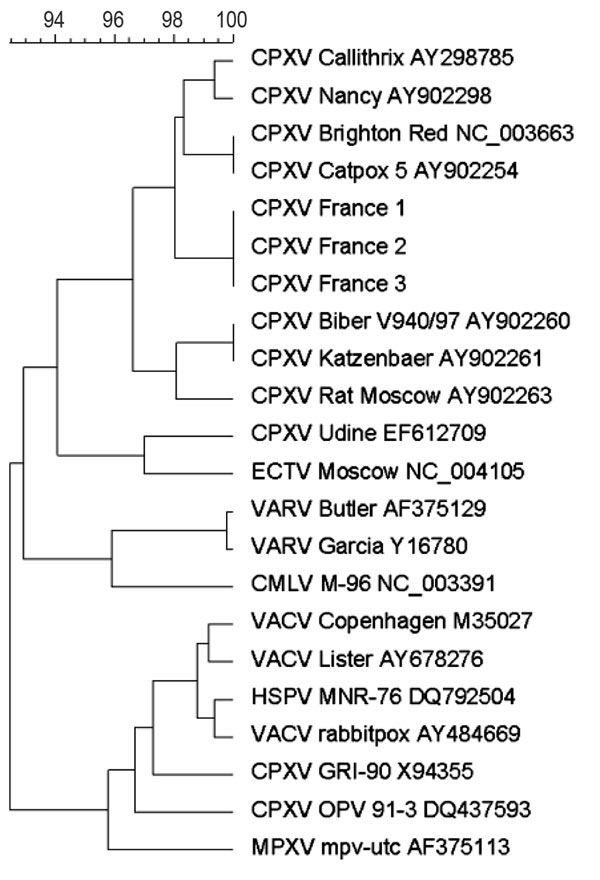Volume 15, Number 5—May 2009
Dispatch
Cowpox Virus Transmission from Pet Rats to Humans, France
Figure 2

Figure 2. Phylogenetic tree based on nucleotide sequences in the hemagglutinin gene. Sequence information corresponds to virus acronym/strain/GenBank accession number. Phylogenetic study was conducted using MEGA software version 4.0 (www.megasoftware.net). Genetic distances were calculated with the pairwise distance method. Phylogenetic tree were constructed with the neighbor-joining method. CPXV, cowpox virus; ECTV, ectromelia virus; VARV, variola virus; CMLV, camelpox virus; VACV, vaccinia virus; HSPV, horsepox virus; MPXV, monkeypox virus. Scale bar indicates genetic diversity at the nucleotide level.
Page created: December 16, 2010
Page updated: December 16, 2010
Page reviewed: December 16, 2010
The conclusions, findings, and opinions expressed by authors contributing to this journal do not necessarily reflect the official position of the U.S. Department of Health and Human Services, the Public Health Service, the Centers for Disease Control and Prevention, or the authors' affiliated institutions. Use of trade names is for identification only and does not imply endorsement by any of the groups named above.